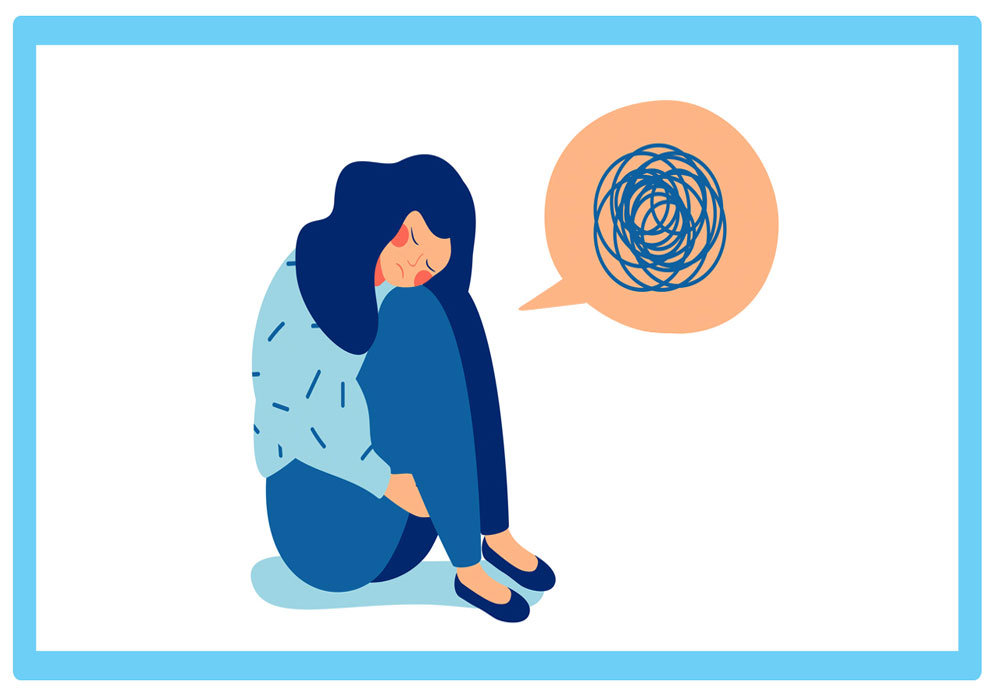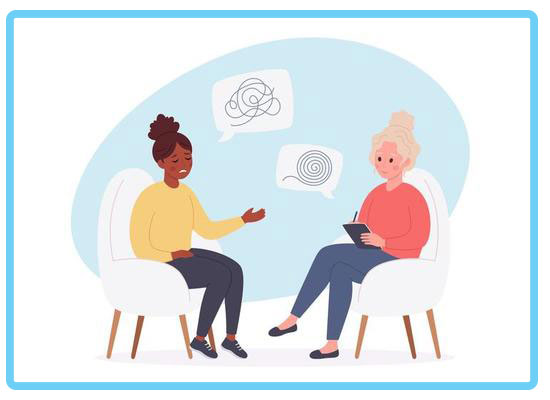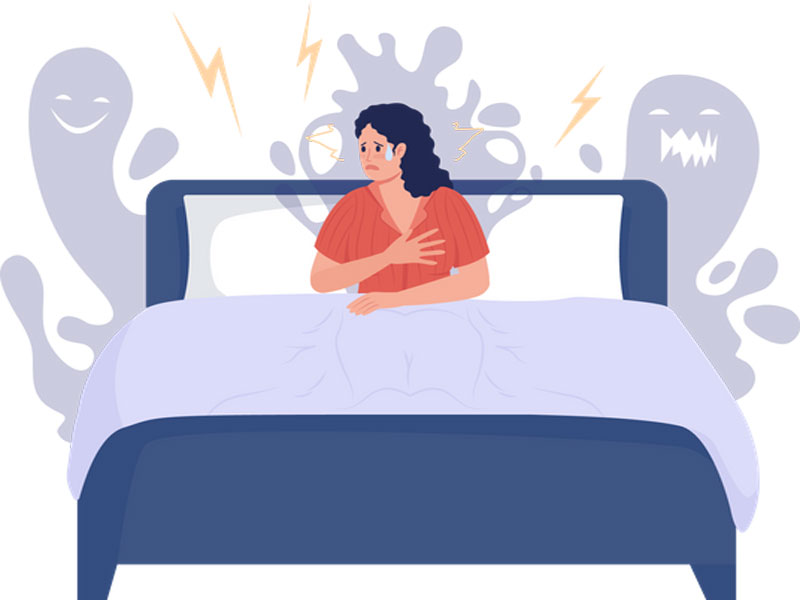Panic attack is a sudden and intense fear that occurs without any real danger or apparent cause. Panic attack is associated with severe physical reactions in the body. These types of attacks can be very scary. People who have a panic attack think they have lost control, have a heart attack, or are dying. Many people experience only one or two panic attacks in their lifetime. yet people who have had frequent and unexpected panic attacks and who have spent a long time in constant fear of a recurrence may have a condition called panic disorder. More information on what constitutes panic disorder is provided in the following sections. Although panic attacks are not life-threatening, they can be frightening and can significantly affect a person’s quality of life. consequently, those who suffer from these stress attacks are advised to first figure out the causes and symptoms of panic attacks and secondly to use treatment methods to reduce the attack.
panic symptoms
Symptoms of a panic attack usually happen suddenly and without warning. Panic attacks usually peak in 10 minutes, and usually end in 20 or 30 minutes, they rarely last more than an hour. Panic attacks can happen anywhere; While driving, when shopping in the store, at a business meeting, and so on. After these stressful panic attacks are over, the person is likely to feel very tired and exhausted. The most important symptoms of panic attack include the following:
- Fast heart rate
- stress
- Sweating
- nausea
- Heaviness or chest pain
- Shortness of breath
- Dizziness or lightheadedness
- abdominal cramps
- Headache
- Severe anxiety
- Feeling of numbness or tingling in the muscles
Panic attacks are rare in children and often begin in adolescence. Moreover, compared to men, women are more likely to get panic attacks. The severity and frequency of these attacks during pregnancy may not change at all. Panic attacks when you are slept are more complicated. If panic attacks occur during sleep, people will experience more respiratory distress. People who experience night-time panic attacks are said to be more likely to suffer from depression and other mental disorders than those who do not experience sleep-related panic attacks. These attacks may be confused with sleep apnea; But people with nocturnal panic attacks also have other symptoms of panic attacks. These attacks last less than 10 minutes, but it may take longer for the person to fully calm down

What causes a panic attack?
Indeed, we must explicitly state that the exact causes of panic attacks are not known; But biological heredity, psychological damage, environmental factors and stressful living conditions seem to be effective in increasing the risk of panic attack.
In general, genetic inheritance plays an important role in the occurrence of panic attacks and therefore panic attacks are seen in some families (family history). It seems that other factors that cause panic attacks in some people are important life changes and events that are stressful; Such as university graduation, marriage, having children, death of loved ones, divorce, job loss and etc.
Medical conditions are also considered to be factors of panic attacks and it is said that problems such as mitral valve prolapse, hyperthyroidism, hypoglycemia (hypoglycemia), use of stimulants (amphetamine, cocaine, caffeine), nutritional deficiencies and drug withdrawal can cause panic attacks.
Some people experience panic attacks due to anxious social factors; Including poverty and low education, which are anxious injuries; Of course, it is not yet known whether these factors are the cause of anxiety. Psychologically, people with panic attacks are more likely than others to have a history of anxiety allergies. A person with an anxiety sensitivity think negative for example, if he or she feels a slight pain in the chest, may think of serious consequences, such as heart failure or death.
In general, if we want to categorize the risk factors for panic attacks, we come to the following:
- Genetic inheritance and family history
- Stressful events and changes in life
- Medical and physical condition
- Anxious social factors
- History of Mental Injury and Trauma

How is panic disorder treated?
When panic attacks turn into panic disorder, there is a serious need for treatment. This disorder is usually treated with psychotherapy, medication, or both. Cognitive-behavioral therapy (CBT) is a method of psychotherapy that is widely used to treat panic attacks. In this method, the person is taught what behaviors and reactions to have before or during a panic attack. This method of treatment causes the patient to gradually face his fears and to participate in the activities that he avoided.
Drug treatment of panic attacks is another method of treatment. Various medications such as antidepressants, serotonin reuptake inhibitors (SSRIs) and serotonin-norepinephrine reuptake inhibitors (SNRIs) are prescribed to control and treat the symptoms of panic disorder. Beta-blockers can also help control some of the physical symptoms of panic attack, such as palpitations, tremors and sweating. Benzodiazepines are another sedative and anti-anxiety drug that can help reduce panic symptoms quickly.
One of the things to keep in mind about taking medications is their side effects. the use of some of these drugs may lead to headaches, nausea and dizziness. Also, taking some of them may be addictive and the person will constantly need a higher dose; In this case, these drugs must be prescribed in a certain amount and for a limited time.
However, any medication to combat seizures or panic disorder must be prescribed by a mental health professional and it is important to avoid taking these medications arbitrarily.


